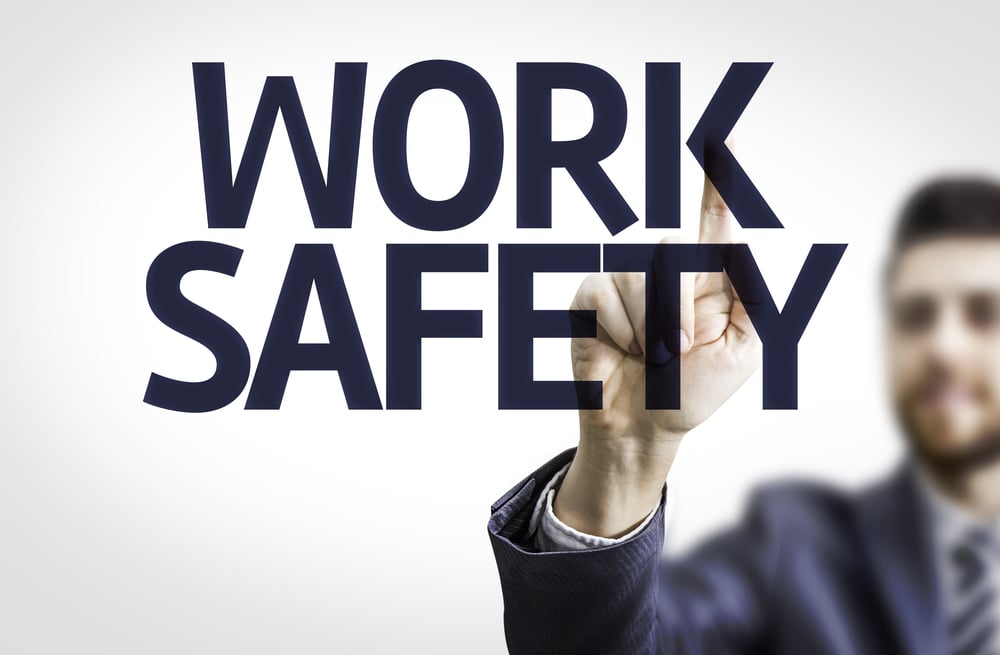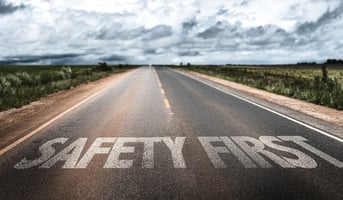OSHA Compliance Training Program overview:
Training for occupational health and safety
The Importance of Workplace Safety and Health Training
Training for occupational health and safety is important for workers and employers alike. It helps ensure that workers are aware of the hazards in their workplace and know how to protect themselves. It also helps employers meet their legal obligations to provide a safe and healthy workplace.
There are many benefits to providing occupational health and safety training for workers and employers, including:
· reducing the number and severity of workplace accidents and injuries;
· improving worker morale and motivation;
· reducing workers’ compensation costs;
· increasing productivity; and
· meeting legal obligations.
Occupational health and safety training can be delivered in a variety of ways, including online courses, face-to-face training, and self-study materials.
Employers have a legal responsibility to provide workers with occupational health and safety training. The type and amount of training will vary depending on the nature of the work and the risks involved.
Workers also have a responsibility to participate in training and to follow all safety procedures.
Occupational Safety:
Workers have the right to a safe and healthy workplace. The Occupational Safety and Health Administration (OSHA) is responsible for ensuring that workers have this right.
OSHA provides resources and information on a variety of topics related to occupational safety and health, including:
· hazard recognition;
· exposure assessment;
· personal protective equipment;
· ventilation;
· electrical safety;
and· ergonomics.
Employers are required to provide workers with information and training on these topics.
When selecting a training provider, it is important to choose one that is accredited and has a good reputation. Training should be relevant to the workplace and delivered by qualified instructors.
Health Training:
In addition to occupational safety, workers also need to be aware of health risks in the workplace. The Occupational Safety and Health Administration (OSHA) provides resources and information on a variety of topics related to occupational health, including:
· hazardous materials;
· indoor air quality;
· lead poisoning;
· noise exposure;
· respiratory protection; and
· wellness programs.
Employers are required to provide workers with information and training on these topics.
When selecting a training provider, it is important to choose one that is accredited and has a good reputation. Training should be relevant to the workplace and delivered by qualified instructors.

Occupational health and safety
Online training for employees
Course Summary:
This course will provide employees with an overview of occupational health and safety, including common hazards and how to prevent them. The course will also cover employee rights and responsibilities under the Occupational Health and Safety Act.
Course Objectives:
By the end of this course, employees will be able to:
- Understand what occupational health and safety is
- Identify common workplace hazards
- Understand how to prevent occupational health and safety hazards
- Understand employees' rights and responsibilities under the Occupational Health and Safety Act.
Course Outline:
1. Introduction to OH&S
- What is OH&S?
- Why is OH&S important?
- The history of OH&S
- The legal framework for OH&S in Canada
2. Hazard identification and control
- Identifying hazards in the workplace
- Evaluating risks associated with hazards
- Controlling risks through engineering, administrative and personal protective measures
3. Ergonomics
- What is ergonomics?
- How can ergonomics reduce the risk of injury in the workplace?
4. Slips, trips and falls
- What are the most common causes of slips, trips and falls?
- How can slips, trips and falls be prevented?
5. Chemical handling
- What are the risks associated with chemical exposure in the workplace?
- How can these risks be controlled?
6. Personal protective equipment
- When is personal protective equipment necessary?
- What are the different types of personal protective equipment?
- How do you select the right personal protective equipment for the job?
7. OH&S in your workplace
- Applying what you’ve learned to your workplace
- OH&S resources and support.
Who Should Take This Course?
This course is intended for all employees.
Delivery Method:
This course is delivered online via our eLearning platform. It is self-paced and can be completed in your own time.
Duration:
This course should take approximately 2 hours to complete.
Assessment:
At the end of the course, employees will be required to pass an online assessment in order to receive a certificate of completion.
Glossary of Terms from the Course:
Safety program: A set of policies, procedures and rules that are designed to protect employees from workplace hazards.
Hazard: A potential source of harm or adverse health effect on a person.
Workplace violence: Any act or threat of physical violence, harassment, intimidation or other threatening behaviour that occurs at the work site. This includes domestic violence that may spill over into the workplace.
WHMIS: Workplace Hazardous Materials Information System. A system for providing information on the safe use of hazardous materials used in the workplace.
OHSA: Occupational Health and Safety Act. The main law that sets out the rights and duties of all parties in the workplace to protect workers' health and safety.
JHSC: Joint Health and Safety Committee. A committee of representatives from both workers and management that meets regularly to identify and resolve health and safety concerns in the workplace.
First aid: Medical assistance provided to an injured or ill person until more advanced medical care is available.
Ergonomics: The study of how people interact with their work environment and how work can be designed to fit people more comfortably.
MSDS: Material Safety Data Sheet. A document that contains information on the safe use, storage and disposal of hazardous materials.
PPE: Personal Protective Equipment. Clothing or equipment worn by workers to protect themselves from workplace hazards, such as gloves, safety glasses and hard hats.
WCB: Workers' Compensation Board. An organization that provides financial assistance to workers who are injured at work or who contract an occupational disease.
Online safety training: Training that is delivered online, typically through an eLearning platform. This type of training is convenient and can be completed in the employee's own time.
Safety responsibilities: The duties of employers, employees and others in the workplace to take steps to protect the health and safety of workers.
Emergency procedures: The plans and procedures that should be followed in the event of an emergency, such as a fire or chemical spill.
Workplace inspection: A walk-through of the workplace to identify hazards and potential hazards.
Construction safety: The measures that are taken to protect workers in the construction industry from hazards.
Hazardous materials: Substances that are poisonous, flammable, explosive or otherwise dangerous.
Asbestos: A material that was once used extensively in building construction and insulation. Asbestos is now known to cause lung cancer and other diseases.
Risk factors: Factors that increase the likelihood of an individual being harmed by a hazard.
Workplace safety: The measures that are taken to protect workers from workplace hazards.
Training programs: Programs that are designed to educate workers on how to safely perform their job tasks.
Orientation: The process of providing new employees with information about the company, their job duties and the workplace.
Safe work practices: Practices that are designed to protect workers from hazards.
Workplace accident: An event that occurs in the workplace and results in injury, illness or death.
Investigation: The process of determining the cause of a workplace accident.
Preventative maintenance: Maintenance that is carried out on equipment and machinery to prevent it from breaking down or becoming unsafe.
Industrial hygiene: The science of protecting workers from exposure to hazardous materials.
Toxicology: The study of the effects of poisonous substances on the human body.
Hazard communication: The process of providing information to workers about the hazards present in the workplace.
General industry: The sector of the economy that includes all businesses that are not classified as construction, agriculture or mining.
Bloodborne pathogens: Pathogens that are present in human blood and can cause disease.
Controlling risks: The process of reducing the likelihood of an individual being harmed by a hazard.
OSHA Regulations: The Occupational Safety and Health Administration's rules and regulations that govern workplace safety.
Enforcement: The process of ensuring that employers comply with the OSHA regulations.
Compliance: The act of following the OSHA regulations.
Penalties: Fines or other punishments that can be imposed on employers who violate the OSHA regulations.
Permit required confined spaces: Confined spaces that are not intended for human occupancy and that require a permit to enter.
Lockout/tagout: A procedure that is used to prevent injuries from happening when workers are servicing or repairing machinery.
Electrical safety: The measures that are taken to protect workers from electrical hazards.
Machine guarding: The measures that are taken to protect workers from hazards that are associated with machinery.
Material handling: The process of moving materials in the workplace.
Ergonomics: The study of how people interact with their environment.
Musculoskeletal disorders: Disorders that affect the muscles, bones and joints.
Repetitive motion injuries: Injuries that are caused by repetitive motions.
Ergonomic principles: Principles that are designed to minimize the risk of musculoskeletal disorders.
Hazardous chemicals: Chemicals that are poisonous, flammable, explosive or otherwise dangerous.
Chemical safety: The measures that are taken to protect workers from hazardous chemicals.
Hazardous energy: Energy that has the potential to harm people.
Safety data sheets: Sheets that contain information about the hazards of a chemical.
Emergency action plan: A plan that outlines what workers should do in the event of an emergency.
Fire safety: The measures that are taken to protect workers from fire hazards.
Evacuation: The process of leaving a building during a fire.
Emergency exits: Exits that are marked with signs and are designed for use during an emergency.
Fire extinguishers: Devices that are used to put out fires.
First aid: The medical care that is provided to an injured person.
CPR: A procedure that is used to resuscitate someone who has stopped breathing.
AED: A device that is used to shock the heart of someone who has had a heart attack.



